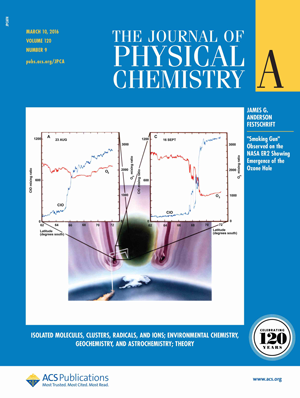A .gov website belongs to an official government organization in the United States.
A lock () or https:// means you've safely connected to the .gov website. Share sensitive information only on official, secure websites.
10 October 2016


We are saddened to learn that Dr. Michael H. Proffitt (1942-2016) recently passed away during a visit to South America. After an early career period as a mathematician, Mike joined the Aeronomy Laboratory (now CSD) in 1980 to conduct ozone research.
Mike developed a dual-beam absorption photometer for ozone measurements on high-altitude balloons and later on the NASA ER-2 high-altitude aircraft. In situ measurements in the stratosphere were still largely under-developed in the early 1980s compared to today. Although ozone was the most advanced, one of Mike's major activities was to participate in a significant international balloon-based intercomparison project to help improve the accuracy of stratospheric ozone measurements (Balloon Experiment on Standards for Ozone Sondes (BESOS)).
According to Herman Smit, one of his original photometers is still operating at Forschungszentrum, Jülich, Germany, Herman's institution. This instrument has operated there for more than 20 years as the ozone reference instrument of JOSIE (Juelich Ozone Sonde Intercomparison Experiment) and at WCCOS (World Calibration Centre of Ozone Sondes) as part of the data quality plan of the WMO/GAW-NDACC-SHADOZ programs (World Meteorological Organization's Global Atmosphere Watch ozone observing system and the contributing Southern Hemisphere Additional Ozonesondes network and the Network for the Detection of Atmospheric Composition Change). With its very high precision, accuracy, and stability, Mike's instrument is the reference standard for the global ozonesonde network.
Mike's ER-2 instrument was on board the NASA ER-2 when it first sampled the Antarctic ozone hole in 1987 in flights from Punta Arenas, Chile. The ozone data combined with data from Jim Anderson's (Harvard) ClO instrument formed one of the 'smoking guns' in linking reactive chlorine to large-scale ozone destruction. The datasets are on the cover of the recent Anderson Festschrift in the Journal of Physical Chemistry.
Mike's instrument has flown on more than 350 stratospheric flights of the NASA ER-2 and WB-57 aircraft since 1985. Ru-Shan Gao and Troy Thornberry inherited his ozone instrument and subsequently used it on the NASA ER-2 aircraft and other platforms. This 'classic' ozone instrument now has been superseded by a new smaller unit developed by Ru-Shan that has flown on the NASA WB-57 and Global Hawk UAS aircraft in several missions. It seems appropriate that Mike's ozone instrument belongs in the Smithsonian collection along with the Harvard ClO instrument in recognition of their singular contribution to understanding the cause of the ozone hole.
Mike also wrote well-cited papers using the correlation between measured ozone and nitrous oxide in the stratosphere to infer chemical ozone loss in the Arctic region in the 1990s. Disentangling dynamic and chemical effects in polar ozone changes is more difficult for the more modest ozone loss in Arctic winters. Amy Butler of CSD is revisiting these correlations and adding more contemporary data to see what we can learn about long-term ozone trends and recovery.
Mike left the Aeronomy Laboratory in 1999 to become the Senior Science Officer at the World Meteorological Organization, where he covered ozone issues for the United Nations and was responsible for the WMO Global Atmospheric Watch Program until his retirement in 2004.
Mike's ozone research and accomplishments and his service to the community are a great legacy. He was measuring stratospheric ozone before the ozone hole was discovered and lived to see the effectiveness of the Montreal Protocol in regulating ozone-depleting substances and the first signs of recovery of the Antarctic ozone hole.
Mike had many colleagues who shared his interests in the chemistry and dynamics of the stratosphere. We will miss his exacting approach to science and his ever-present sense of humor and enthusiasm for his ozone measurements and what they told him about the atmosphere.